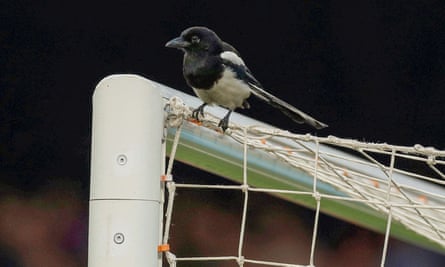The crowd goes wild: FC Barcelona reveals Camp Nou stadium’s animal inhabitants | Global development
In the silence after the final whistle you can hear the blackbirds sing, or perhaps a chaffinch or a Sardinian warbler. Or, if night has already fallen, you may see the bats swoop low over the centre circle as the fans shuffle towards the exits. This is the Spotify Camp Nou, the home of Barcelona football club … but also of myriad creatures.
Barcelona is probably the first major football club in the world to produce a guide to its stadium’s wildlife, after carrying out a census of its animal occupants. The guide is part of the club rethinking its role in the community and its environmental impact, says Jordi Portabella, an environmentalist and former candidate for mayor of the city, now in charge of developing the club’s sustainability policy.
Portabella explains that a wildlife census was needed before the football season ends in May, when work will begin on remodelling the stadium. This will entail demolishing the entire upper stand to increase capacity from 99,354 to 105,000 spectators, work that will affect the many birds that nest there, as well as the colony of bats.
They are taking measures to protect the nests as best they can, says Portabella, and to establish new nesting areas to ensure the birds return when work is complete. Migratory species such as swallows and martins have been nesting on the exterior or inside the roof of the stadium since it was built in 1957.
“There’s an historical coexistence based on mutual respect,” says Portabella. “It’s as though the humans and the animals have come to a tacit agreement. For example, up in the stands we’re used to having bats flying around us during a match.”
The bats have made their home close to the tribuna, the seats reserved for the club president and the crème de la crème of Catalan society.
The census was carried out by a specialist company that says the site is like an oval cliff face surrounded by trees, providing a habitat for cliff-dwelling and woodland species. Thirty-four species were counted, 31 of them birds, along with two reptiles and one mammal – the bats.
The club says that scrupulous hygiene measures ensure there are no rats. Squirrels have made the odd cameo during matches but are not resident.

Among the birds, researchers found two species of swift, two martins, two types of swallow and three varieties of tit. There are also three species of parakeet, none native; they are descended from escaped pets and are now widely seen in city parks throughout Spain.
As well as urban regulars such as pigeons, gulls, starlings and magpies, the team encountered collared doves, three species of finch, pied flycatchers, firecrests, Sardinian warblers and white wagtails.
A pair of kestrels have bred in the stadium and peregrine falcons, nesting in a nearby university building, hunt around the ground. The falcons are one of only seven pairs in the city. The birds were reintroduced in Barcelona a few years ago after being driven to extinction at the end of the last century.
The two reptiles discovered are a gecko and a common wall lizard of the sort you would find on any balcony in the city in summer.
after newsletter promotion
Stadiums are unique in the urban landscape, occupying large areas in the city centre, inactive for most of the week, then interrupted by a surge of activity over a few hours when tens of thousands of fans converge, consuming large quantities of food, drink and electricity, briefly saturating public transport and the surrounding public space.
Portabella says the club is very conscious of its environmental impact and envisages what he calls the “Barça space”, converting the surrounding area, much of it a bleak concrete heat-sink in summer, into something more like a large city square, softened with trees and green spaces.
“Barça wants to be part of the solution to the problem of climate change, not part of the problem,” he says, adding that everything from electricity generation, water consumption and waste production is being analysed in order to minimise environmental impact.
While few of Europe’s big clubs have fully embraced environmental change, Barça could look to the semi-professional English club Dartford FC in Kent for inspiration. A model of environmental consciousness, the roof over the stand at its Princes Park stadium (capacity 4,100) is covered in vegetation to improve insulation, electricity comes from solar panels and rainwater is collected to water the pitch, which is laid below ground level to reduce light and noise pollution.
Meanwhile, Barça has added wildlife to its boast of being “more than a club”. However, as football coaches never tire of repeating, what matters is what happens on the pitch. The rest is for the birds.

